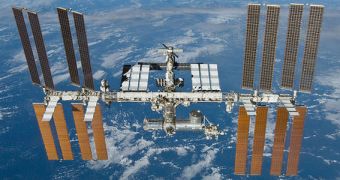With space agencies such as NASA already planning long-term space exploration missions for the near future, the issues of astronaut health and the ethics involved are becoming increasingly complex. More and more, the image that emerges is one where the well-being of astronauts will have to be sacrificed to reach targets such as Mars. Let us take a look at the most basic problems associated with space travel.
I do not think many news outlets or space agency officials focus on the negative side-effects associated with space exploration. Even a short-term, 6-month stay aboard the International Space Station (ISS) can adversely affect astronauts, as has been evidenced by numerous studies. While bone and muscle mass loss are the most commonly cited effects, others too occur, scientists say.
Blood circulation is the first to be affected by lack of gravity, since the heart does not need to work against gravity anymore. As such, blood pressure rises and heart rate increases, as more and more blood moves from the legs to the trunk. The most common side-effects of exposure to zero gravity are nasal congestion, so-called skinny bird legs, and puffy faces.
Motion sickness is also common among astronauts on the space lab, with nearly 40 percent of all crew members reporting this condition. Some of the symptoms include nausea, vomiting, headaches, dizziness and malaise, but most of them disappear within 2 to 3 days of reaching space. These symptoms are partially caused by the changes in blood circulation I have mentioned above.
One of the more unusual effects of exposure to microgravity is a series of changes that affect human red blood cells, which are very important for the immune system. These cells change shape and become more spherical, while also decreasing in number in the bone marrow. These changes are reverted once the astronauts return home to Earth.
Back aches are also very common, due to the fact that exposure to microgravity causes the back vertebrae to separate. This triggers the relaxation of ligaments and muscles on the back, which can be very painful. On average, astronauts on the ISS are up to 5 centimeters (2 inches) taller than on Earth.
Muscle and bone loss, as well as fatigue, occur due to lack of physical strain on the musculoskeletal system. Any long-term mission, to Mars or a near-Earth asteroid, will have to feature an intense work-out routine, so that astronauts can retain the use of their limbs when they arrive at their target.
From the news stories on the ISS I have covered so far, astronauts on the ISS also have to exercise their muscles and bones on a special treadmill every day, but this does not prevent them from being unable to exit their Soyuz space capsules on their own once they return to Earth.
Other factors that experts hypothesize would significantly affect space flyers on their way to Mars include psychological aspects such as long-term isolation, limited mobility, living in close quarters and monotony, lack of cleanliness, poor balance and orientation, and others. However, everything mentioned above falls in the short-term effects category.
When it comes to long-term effects, the situation becomes even more complicated. Bone loss resulted from prolonged exposure to zero gravity could easily lead to fractures, various types of weakness and painful urinary stones. As one who has been through several fractures, including of the spine and clavicle, I can tell you that spending several months pinned to a seat is not all that great.
Even more significant than bone loss is the fact that cell patterns appear to change in space. For instance, when new cells are produced, structures within called microtubules arrange themselves in patterns that are not possible under the effects of gravity. There are currently no studies showing how astronauts would re-adapt once they return, or even if that is possible.
I have naturally saved the worst for last. The most important issue plaguing long-term space exploration at this point is exposure to radiation. These radiations are released by the Sun, but can also come in the form of cosmic rays. At this point, our technological capabilities are simply not developed enough to allow space agencies to protect their astronauts against space radiations.
Exposure to this hazard carries a high chance of leading to the development of heart diseases, brain damage, impairments of the central nervous system, cataracts, and cancer. It is entirely possible for an entire crew to be killed off by radiations even before they reach the Red Planet. Coating a spacecraft in lead to protect it against these hazards is simply impossible.
Interestingly, some studies have revealed a series of positive outcomes stemming from long-duration space missions, including a positive and growth-enhancing experience for many individuals. Astronauts gain a deeper appreciation of Earth, its peoples and its beauty, and some scientists say that this effect may in part counteract some of the negative repercussions of long-duration space travel.
I am very interested in knowing what you think about this. Should space agencies modify their astronaut health guidelines just to allow for such missions to be conducted? Or should astronaut safety come first? Historically, the two have been at odds, but perhaps a way forward can be found? What do you think about the ethical challenges associated with making such a decision?

 14 DAY TRIAL //
14 DAY TRIAL //